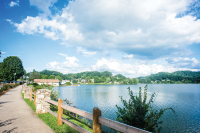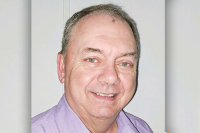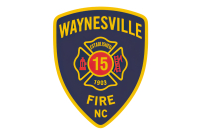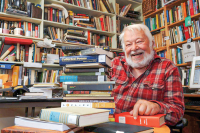Lake Junaluska merger bill off the table indefinitely
A state bill that would have merged Lake Junaluska with the town of Waynesville is dead for now.
Rags to riches: Unlocking the value of antiques rarely results in a jackpot
 Lake Junaluska resident Hattie Polk finally inched her way to the front of the line and released her clutch on what she believed to be an English monastery lantern dating to the reign of King Henry VIII, circa late 1800s — proudly offering it up to the antique appraiser with a glimmer in her eye.
Lake Junaluska resident Hattie Polk finally inched her way to the front of the line and released her clutch on what she believed to be an English monastery lantern dating to the reign of King Henry VIII, circa late 1800s — proudly offering it up to the antique appraiser with a glimmer in her eye.
With merger in limbo, Waynesville budget sent back to the drawing board
The Waynesville Board of Aldermen rubberstamped a $31.8 million budget Monday, but it may just have to turn right around and approve a new one.
Ballot referendum likely in Lake Junaluska merger with Waynesville
A compromise has been floated in Raleigh that could break the political impasse over the proposed merger of Lake Junaluska with the town of Waynesville.
Lake Junaluska merger temporarily stymied by Raleigh politics
 The merger of Lake Junaluska with the town of Waynesville has yet to get the blessing of state legislators in Raleigh, and time is now running out.
The merger of Lake Junaluska with the town of Waynesville has yet to get the blessing of state legislators in Raleigh, and time is now running out.
Lake Junaluska celebrates 100 years
 A hundred years of history and community will come together during the Centennial Homecoming Week at Lake Junaluska Conference and Retreat Center from June 30 to July 7.
A hundred years of history and community will come together during the Centennial Homecoming Week at Lake Junaluska Conference and Retreat Center from June 30 to July 7.
Reunions, dynamic speakers, an impressive lineup of concerts, a golf tournament, a water skiing show, fine art and an antiques “road show,” home and garden tours and historic reenactments are all on tap for the thousands of locals and generations of families who will make the pilgrimage to honor and celebrate Lake Junaluska during this special week.
Hoping Lake J – and its infuence – will be around for 200
 The Lake Junaluska Assembly is marking its 100th anniversary this year, and a plethora of activities will take place at the Methodist conference center during the July 4 week. I’m not Methodist, but because of my job as a journalist in this region, I’ve seen first-hand the positive impact the Lake has had on Haywood County and the surrounding area. And I’m not talking about economics and tourism and dollars, though it has a positive impact in that area as well.
The Lake Junaluska Assembly is marking its 100th anniversary this year, and a plethora of activities will take place at the Methodist conference center during the July 4 week. I’m not Methodist, but because of my job as a journalist in this region, I’ve seen first-hand the positive impact the Lake has had on Haywood County and the surrounding area. And I’m not talking about economics and tourism and dollars, though it has a positive impact in that area as well.
Feeding ban worked: Fewer ducks and geese now populate Lake Junaluska
 There’s been a noticeable decline in the number of ducks and geese at Lake Junaluska since a feeding ban went into effect last fall.
There’s been a noticeable decline in the number of ducks and geese at Lake Junaluska since a feeding ban went into effect last fall.
Gettin’ together and feelin’ alright
 This summer, there will be a new scent wafting through Lake Junaluska.
This summer, there will be a new scent wafting through Lake Junaluska.
Waynesville, Lake Junaluska hammer out details of merger
The town of Waynesville has a large checklist to tackle in the coming months before Lake Junaluska is officially added to the town limits.





